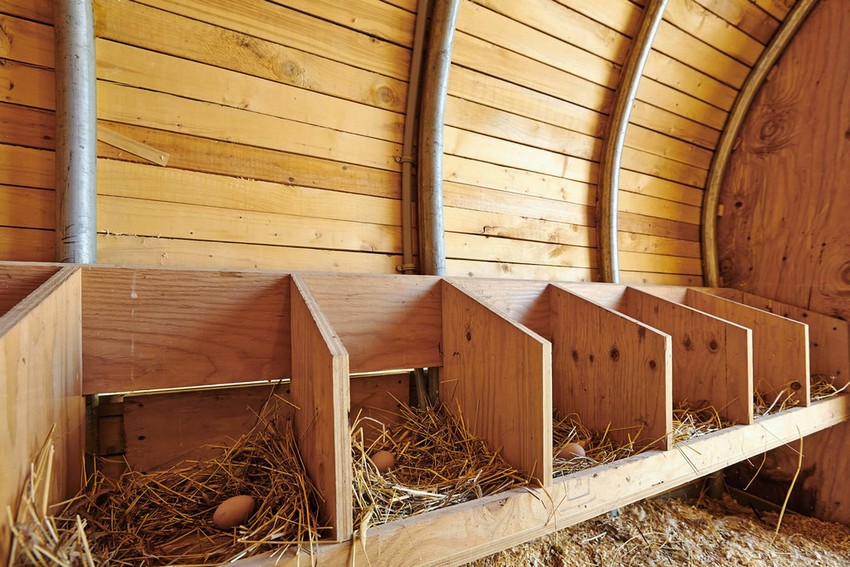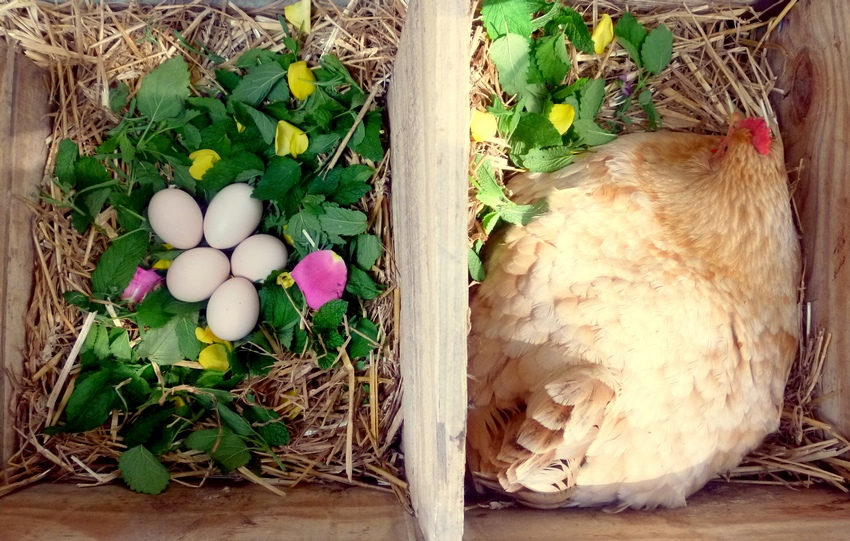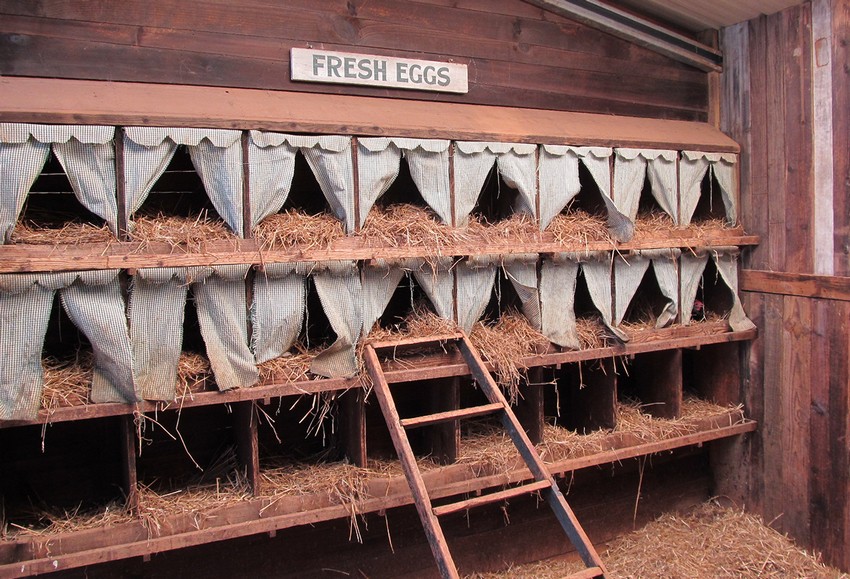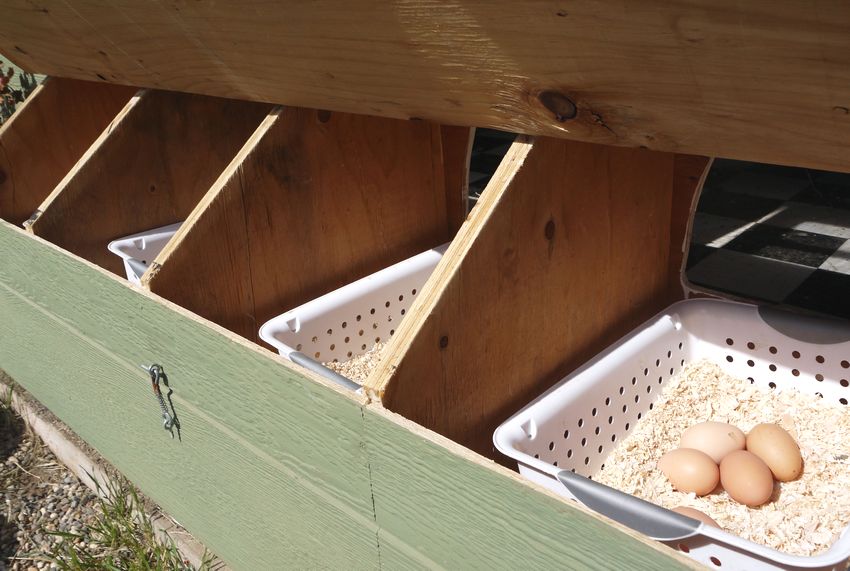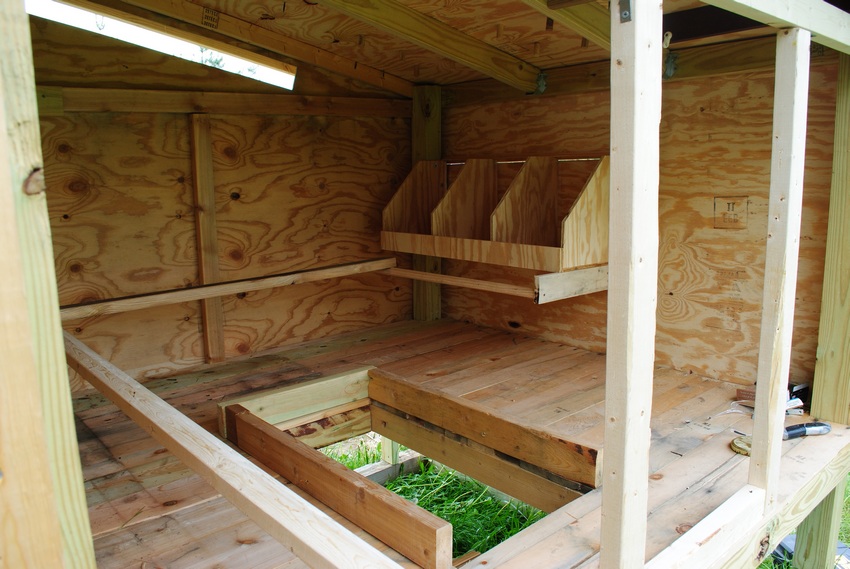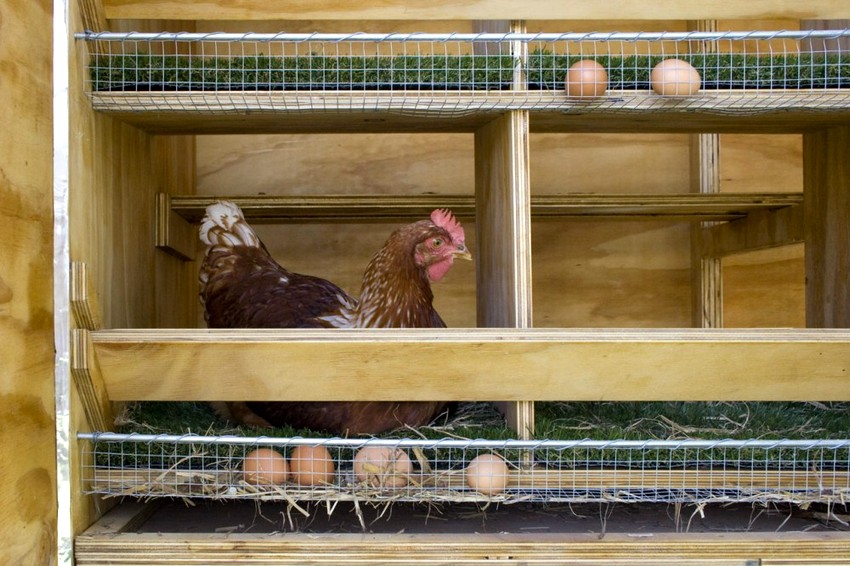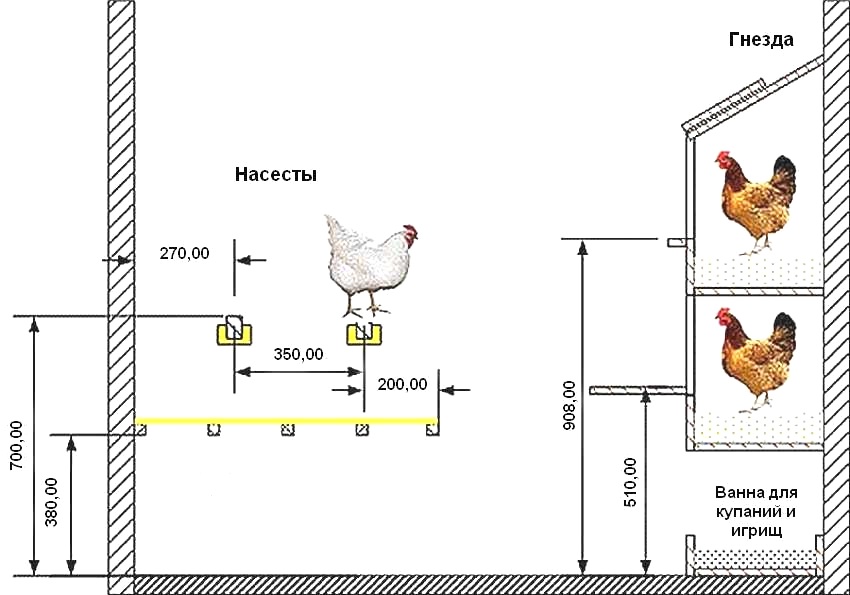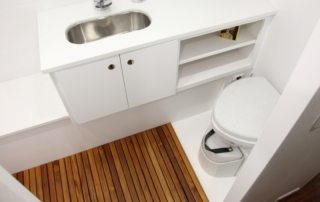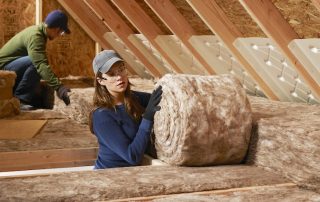Keeping chickens is very convenient and profitable, since, without requiring much effort to care, the birds regularly provide the whole family with fresh eggs. In addition, eggs can be sold for additional income. However, for the chickens to be healthy and carry well, it is important to take care of their comfort. This will help the instructions on how to make nests for laying hens with your own hands: photos, sizes and useful tips will allow you to cope with the task even without relevant experience.
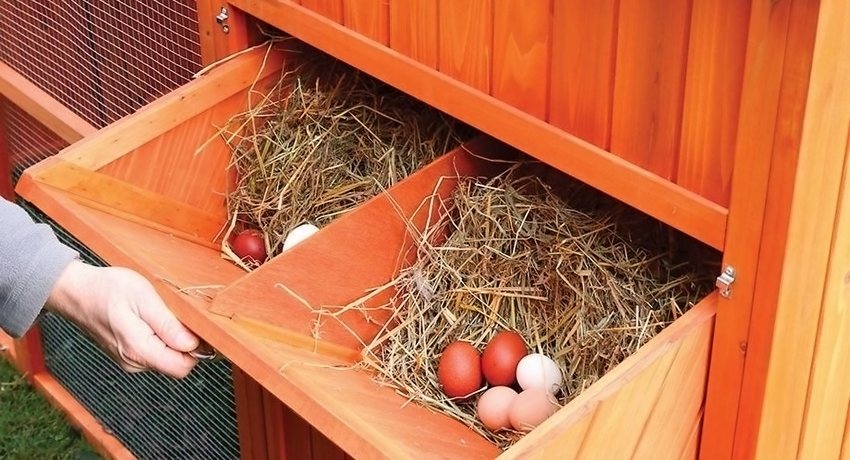
Competently arranged nests will be comfortable not only for the birds, but also for the owner, which will make it easy to care for the poultry house and get more eggs
Content [Hide]
- 1 How to equip a nest for chickens: basic rules
- 2 The main types of nests for laying hens
- 3 DIY nests for laying hens: photos, sizes, calculation of parameters
- 4 How to make a nest for laying hens: box design
- 5 Laying hen nests with egg collector: design tips
- 6 Do-it-yourself perches for laying hens: photos, sizes, advice on construction
How to equip a nest for chickens: basic rules
A properly equipped nest will increase the number of eggs the hen brings. In addition, their quality will become better, and the shell will be reliably protected from damage. It is important to arrange everything so that the chicken rushes in a specially designated place. So, arranging nests for laying hens with your own hands, it is necessary to provide the birds with maximum comfort.
To do this, adhere to the following rules:
- place nests in the shade as far away from sunlight as possible;
- choose a dry and warm place;
Helpful advice! Lay hay or sawdust on the floor to keep the chickens comfortable. Sawdust in this case is preferable, since the hens easily throw hay out of the nest. To prevent the eggs from rolling out, the flooring should be a couple of centimeters lower than the side of the nest.
- to ventilate the flooring and keep the nest dry, take care of ventilation or make the bottom of the nest mesh;
- on the ground or at the entrance to the hen house it is always colder and wetter - there the bird can easily catch a cold and because of this become less active, so place the nests higher and further from the entrance;
- do not fasten the nests directly to the wall: in winter this is uncomfortable for chickens, in addition, such an arrangement significantly reduces the service life of the entire structure;
- when making nests for chickens with your own hands, make sure that there are no long nails and chips in the structure that can cause injury to the bird;
- the number of nests depends on the number of birds: there should be 1 place for 5 chickens.
The main types of nests for laying hens
Are you not ready to delve into the intricacies of how to make a nest for chickens? Buy a ready-made version or build a nest from available tools. For this purpose, plastic and wooden boxes, old baskets and cardboard boxes are suitable. The main thing is to choose a shaded secluded place.
If you decide to equip a full-fledged nest yourself, first of all, decide on the type of construction.
There are two main types:
- Drawer design. The design of such a nest is extremely simple and makes it possible to make a number of nests for all birds. In addition, it will not be difficult to accustom a chicken to such a nest: so that it gets used to rushing there, it is enough to lock the bird inside for a long time.
- Chicken nest with egg collector. This type of nest implies different designs, but the principle is the same for all: the eggs almost immediately fall into a tray specially designed for these purposes and the chicken hardly touches them. This option is especially relevant for a large farm, when the number of chickens is high.
DIY nests for laying hens: photos, sizes, calculation of parameters
One of the most important factors affecting the comfort of birds is the size of the nest for laying hens. It is important to understand that you cannot train a chicken to run in a nest if it is uncomfortable for her to sit in it.
First of all, the size of the nest for chickens depends on the breed of bird.
Correspondence table of bird breed and nest sizes for chickens:
| Bird breed | Nest width, cm | Nest depth, cm | Nest height, cm |
| Laying hen | 25 | 35 | 35 |
| Meat and egg chicken | 30 | 40 | 45 |
Regardless of the breed of birds, the height of the nut must be at least 5 cm. Also, make sure there is a special take-off shelf in front of the entrance. Place it at least 10 cm from the entrance. The section of the shelf should be 5x2 cm.
If possible, the slope of the roof should be 45 ° - this will exclude the tendency of birds to sit on top.
Set up nests before introducing chickens into the house to give them a chance to get used to new shelters and get comfortable. Therefore, in advance, include drinkers in the nest plan, as well as self-built perches for laying hens: the drawings will help you not forget anything important and place all objects in an optimal way.
Helpful advice! The simplest version of a nest for chickens is a "booth" made of a plastic box for vegetables and plywood sheets. However, it is better to equip more complex nests, since this design is unnecessarily bulky, and most importantly, not very comfortable, in winter it is completely dangerous to the health of birds.
How to make a nest for laying hens: box design
With a little effort on your part, the birds will have a real house where they can feel comfortable, which means they will delight you with activity and a large number of eggs.
To make a structure in the form of boxes, you will need the following materials and tools:
- boards, plywood;
- sandpaper;
- fasteners;
- timber;
- screwdriver;
- a hammer;
- jigsaw.
How to make nests for laying hens with your own hands: drawings and procedure
Making a comfortable nest is easy. Follow the instructions and everything will work out even without a lot of experience in the construction of such structures:
- If you are using planks for construction, sand them thoroughly.
- Next, you need to cut the blanks. It is important to make accurate calculations of the parameters of the parts you need. First of all, count the required number of cells. Then multiply the resulting number by the width of one cell - it should be at least 25 cm. The height of the box is calculated using the same formula.If you have a lot of birds on your farm, make several floors.
- Punch together the cut pieces.
- To give the structure strength, fix the timber on the inside of the resulting box in the corners.
- The entrance can be left open. Or, cut out round holes to match the number of laying hens and line the box.
- Make a nut. To do this, take a 10 cm wide bar and secure it from below along the entire length of the structure divided into cells.
- Step 10 cm from the nest entrance and secure the take-off platform.
- If you have a structure in several tiers, make stairs. Each tier should have one staircase.
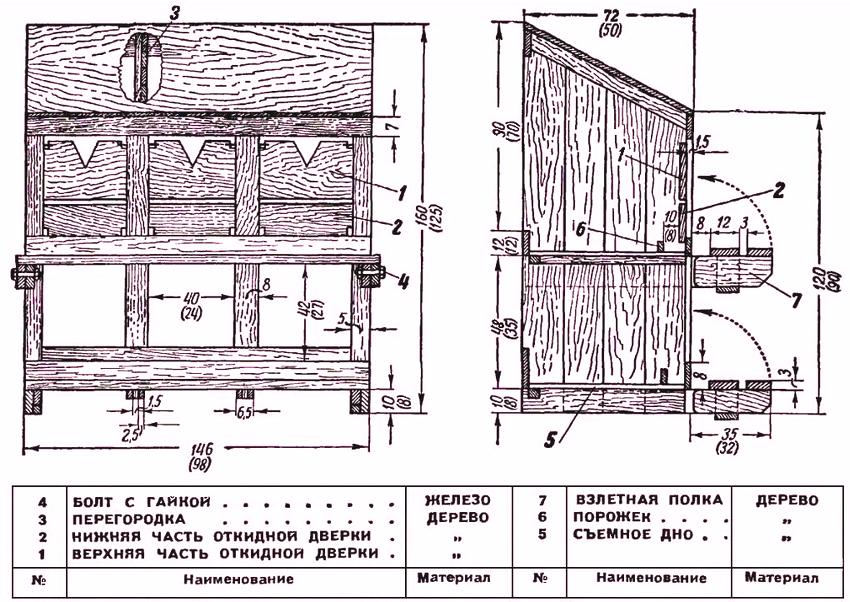
Diagram showing installation dimensions for poultry nests (dimensions for chickens are indicated in brackets)
Helpful advice! If the structure has a horizontal roof, cover the surface with styzol to prevent damage from bird droppings.
Laying hen nests with egg collector: design tips
If you are busy during the day and cannot keep an eye on the chickens, you can make a more sophisticated nest. There are two types of designs available with an egg collector.
Nest option for laying hens to avoid pecking eggs: double bottom design
To build such a nest, you will need the following materials and tools:
- thin plywood boards;
- fasteners;
- material suitable for pallet upholstery;
- sandpaper;
- screwdriver;
- hacksaw;
- a hammer;
- knife;
- scissors.
The basic rules are simple:
- do not take long nails: sticking out from the outside, they can easily injure birds;
- after the construction of the nest, carefully inspect it for chipping, chips, make sure the structure is strong in order to protect birds from injury;
- For bird comfort, spread sawdust, straw or hay on the floor. Change the filling regularly and clean the nest of droppings;
- microclimate is of great importance for chickens to feel comfortable. Place nests in a dry, draft-free location.

The egg receiver will allow you to keep the eggs intact, which is especially important with a high population of chickens
Instructions on how to make a do-it-yourself nest for laying hens with an egg collector (photos, dimensions and drawings are easy to find on the net):
- Make a doghouse design. Pay special attention to the bottom: in this version of the nest, it should have a slight (about 5 °) slope towards the rear wall of the structure. Leave an egg-sized gap between the wall and bottom.
- Make a pallet. For upholstery, choose a soft, non-slip material: fabric, felt, the back of linoleum, rubber. The length of the pallet should be 10 cm longer than the depth of the nest to ensure that the eggs are easily retrieved from the outside.
- Attach a bar to keep the eggs from falling.
- Attach the pallet to the main body of the nest, maintaining a 5 ° slope. As a result, the egg will roll, fall into the lower pan and remain safe there until you pick it up.
Helpful advice! The floor in such a nest should be mesh. This solution helps to ventilate the flooring. A good material for making a floor is wire: braid it, leaving 4x5mm gaps, and place the litter material on top.
How to make a nest with an egg container
To craft a wooden nest with egg collector, you will need the following materials and tools:
- hacksaw;
- nails;
- a hammer;
- soft material;
- Chipboard and plywood;
- egg container.
The order of work is as follows:
- Build a box, fasten the side walls, fasten the bottom at an angle of 10 °, make a roof.
- Cut out the entry hole and cover the front of the socket.
- On the back wall at the bottom, cut a hole slightly larger than a chicken egg.
- Place a container with soft material under the bottom.Now, when the eggs roll and fall into the pan, they will be reliably protected from damage.
Related article:
Do-it-yourself winter chicken coop for 20 chickens: features and tips for making. Purpose, features, characteristics of this building. Step-by-step instructions for making a chicken coop with your own hands.
Ensure that, given a sloping bottom, there is always a minimum amount of flooring in the nest, otherwise it can become an obstacle and make it difficult for eggs to roll into the tray.
After you have built nests and perches for chickens with your own hands, you can move on to an equally important aspect of arranging a chicken coop - bird roosts.
Do-it-yourself perches for laying hens: photos, sizes, advice on construction
Any owner knows that all chickens prefer to rest and sleep on the roost. This crossbar can be round or square in cross-section and belong to one of many types. The appropriate type should be selected based on the available space and the number of birds on the farm.
Types of chicken perches
Perches for chickens are of various designs:
- perches located at different levels. This option is relevant when there are a lot of chickens on the farm, and the area of the chicken coop is small. The main disadvantage of this design is that in such a chicken coop the birds will constantly quarrel because of the place higher, and the chickens sitting on top will stain those below them with droppings;
- several bars fixed at the same level on the wall or around the perimeter of the house. Ideal for laying hens, allowing them to choose the most comfortable position without disturbing other birds;
- perches that are fixed on vertical posts. Bird-friendly design with simplicity of construction. The best option for those who want to design a roost for chickens with their own hands;
- table equipped with crossbeams. This design is convenient for its mobility. The table is easy to carry, convenient to disinfect, clean;
- box with perches. It is also characterized by mobility - if necessary, it is easy to move from place to place. The main disadvantage of this solution is the small number of places for placing birds. Thus, this option is relevant only for a small farm.
Helpful advice! It is not difficult to understand how to make roosts for chickens, how to make this element of the chicken coop yourself. In this case, you can be sure that the roost meets all your needs and the characteristics of your farm.
How to make a roost for chickens yourself: a detailed algorithm of actions
Step-by-step instructions for creating a perch for laying hens:
- Prepare a plane, nails, hammer, sandpaper, and wooden blocks. In cross-section, the bars should be 40x60 cm.
- Calculate roost sizes based on the number of chickens on your farm and considerations for comfortable placement. For example, 10 egg hens require 2.4 m of crossbar. The best solution would be to divide the perch into 2 parts - 2 crossbeams (each length is 1.2 m).
- Take 2 support strips. Their length should be 0.6 m. Install them on opposite walls at a height of 0.9 m from the floor and a distance of 0.3 cm from the wall on which you plan to place the roost.
- Take the timber from which you will make the crossbar. Process it so that no burrs or chips remain on the surface. Cut off sharp edges with a plane, and use sandpaper for grinding.
- Nail the ends of the bar to the support bars 30 cm from the wall.
- Retreat the same amount. Drive in the second bar.
- Step back 0.4 m from the floor. Nail the bars to the side walls.
- Attach several planks to the blocks - they will serve as the basis for the pallet.
- Set up a pallet to receive the droppings.You can use sheet metal to make it. Also, a regular wooden shield is well suited for these purposes.
- Use the remaining blocks to make a ladder.
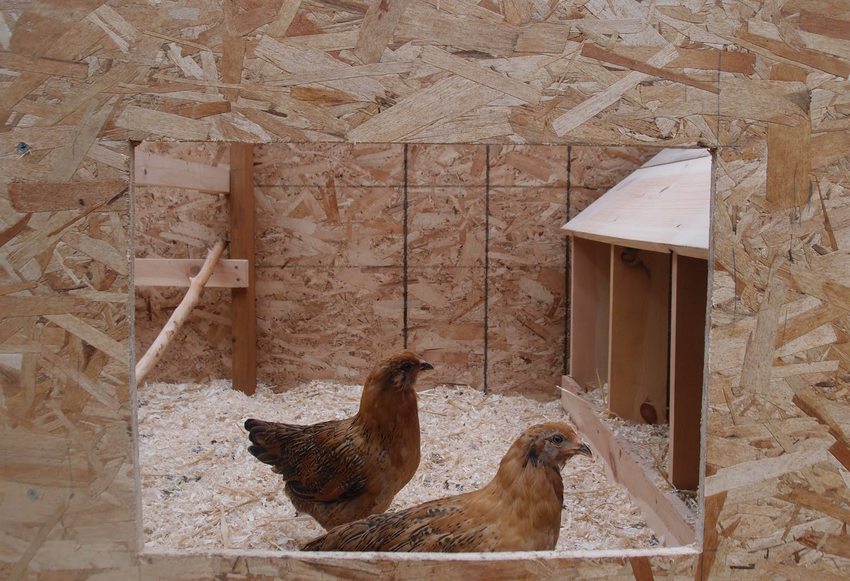
When building a chicken coop with your own hands, you get a design that is ideal for the conditions of your particular farm
Where to optimally position the perch
The roost should be away from the door to protect the birds from drafts and, as a result, possible health problems. Choose the warmest place in the room. It is also necessary to have more light there, so it is a good idea to place the roost near the window.
It is convenient when there is a shield under the perch, into which droppings fall. This makes cleaning the coop more comfortable. Sprinkle sawdust or sand on the pallet to keep droppings less linden on the boards. When making a pallet, provide for its easy disassembly - this will make it as simple as possible to care for the poultry house.
Place the roost at a height of at least 0.6 m and no more than 1 m from the floor. In cross-section, the crossbar used for perching should be 5-7 cm. The calculation is based on half the length of the open chicken foot, measured from the beginning of the middle toe to the end of the thumb. In order not to lose balance, the chicken needs to tightly wrap its paws around the bar.
Make sure that for each bird there is at least 18 cm on the perch, if the chicken is of the egg breed, and at least 25 cm for the meat and egg breed.
Building a nest and a roost for chickens with your own hands is not so difficult. The independent choice of the device, materials, sizes and other parameters will allow you to obtain a design that is ideally suited to the conditions of your particular farm.
